Plantar Fasciitis Vs
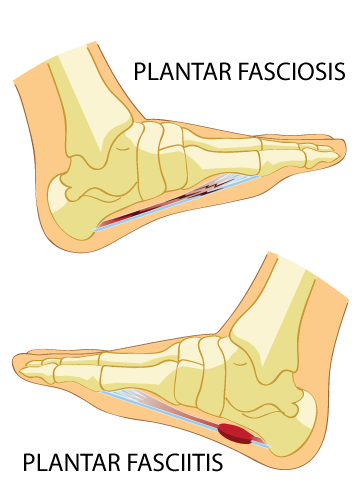
Anatomy Of The Foot
The plantar fascia is a long ligament that runs from the heel to the ball of your foot. It is one of the major elements in creating the arch of your foot. The plantar fascia serves to absorb the force of your weight as you stand, walk, jump or run. With Plantar Fasciosis, the primary area of aggravation is the site where the fascia attaches to the heel bone, where the degeneration of the fascia will have caused microtears to develop.
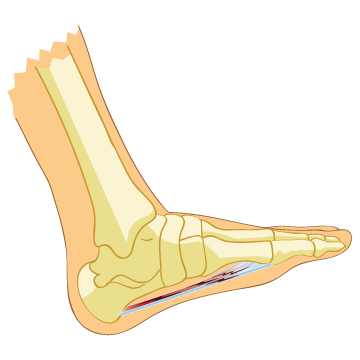
The Condition
Plantar Fasciosis (also known as Plantar Fasciopathy) occurs when the plantar fascia begins to degenerate as a result of chronic or untreated Plantar Fasciitis. This degeneration causes the plantar fascia to tear where it attaches to the heel bone. Unlike Plantar Fasciitis, Plantar Fasciosis does not involve inflammation of the plantar fascia.
Plantar Fasciitis occurs when the plantar fascia becomes irritated and swollen due to overuse or an injury.
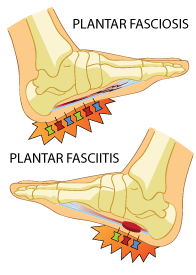
Symptoms
The most noticeable symptom of Plantar Fasciosis is heel pain. The pain is usually worst in the morning after you've taken your first few steps of the day. Some people with Plantar Fasciosis also experience pain after standing or sitting down for extended periods.
With Plantar Fasciitis, you will notice the pain becoming steadily worse day after day, usually with more pain at night than you would experience with Plantar Fasciosis. The main difference in symptoms between the two conditions is the presence of inflammation with Plantar Fasciitis and the absence of it with Plantar Fasciosis.
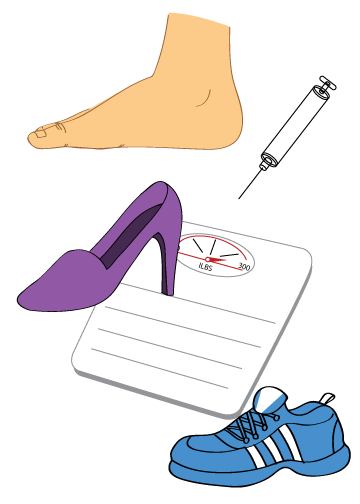
The Cause
Common causes of Plantar Fasciosis include improper footwear, obesity, increased level of physical activity, flat feet, high arches, and cortisone injections. The causes of Plantar Fasciosis and the causes of Plantar Fasciitis overlap quite a bit. That's why many people confuse the two conditions. When it comes to the cause of your Plantar Fasciosis, it's likely that it started out as Plantar Fasciitis and that one of the factors mentioned caused it to progress to the degenerative stage.
Plantar Fasciitis is most commonly caused by overuse of the plantar fascia. This can be related to working on your feet all day, or from a specific sporting activity. This may be further aggravated by improper footwear, obesity, etc.
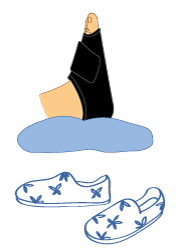
Treatment
While cold compression therapy is a common way to get rid of the inflammation associated with Plantar Fasciitis, it's not an effective treatment for Plantar Fasciosis, since this condition doesn't involve any inflammation. The best treatment methods for Plantar Fasciosis include:
- Proper Shoes: Wearing shoes that have the proper support is very important in treating Plantar Fasciosis. Wearing properly fitting shoes can often greatly reduce or eliminate symptoms of pain. Not only can wearing properly fitting shoes help treat this painful foot condition, but it can also help prevent it. Look for shoes that keep your feet in correct alignment.
- Heat: Heat therapy can provide great relief for conditions that don't involve inflammation. It helps improve your blood circulation to promote faster healing of damaged tissues.
Full list of treatment methods can be found on our treatment page
